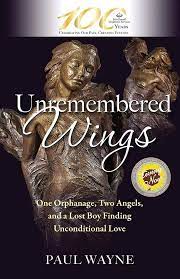
This award winning biography was written by Paul Wayne and published by Graham Publishing Group.
You’ve written a book. A novel, biography, business book, self-help book. The genre doesn’t matter. Whatever type of book you’ve written, it has to be well marketed. You have two choices: Traditional vs. Online Marketing. Which way are you going to go?
Both traditional marketing and Internet marketing have their merits. Let’s lay them out.
Traditional marketing usually comes under these headings: Print media includes newspapers, magazines, brochures, and newsletters; Broadcast media translates into TV and radio (or maybe a guy driving through town with a megaphone on the roof of his car); Direct Mail comes under the heading of fliers, postcards, and catalogues; finally, you have telemarketing. These have all withstood the test of time, and you can measure their success fairly easily.
Digital marketing includes websites, social media networking, video marketing, and things like Google ads and banner ads. These are cost effective. If they are used correctly, they have unprecedented audience reach. They also allow for a direct response from your audience.
From a cost point of view, online marketing is, in this day and age, hands down the better value.
If you’re goal is to reach 2,000 people, you might budget $500 for a magazine ad, $250 for a newspaper spot, and, say, $1,000 for direct mail. If you want to reach 2,000 using online marketing, you can probably spend $75 – $100 for the same result using social media.
Traditional media can, however, support of your digital efforts under the right circumstances. Printing an ad for your book or your book launch on a billboard or paying for ad space in your local newspaper can potentially increase your exposure, lead people to your website, and call attention to your social media efforts.
What about metrics? With online marketing, you can measure traffic to your site instantaneously and gage the level of engagement your audience has on any social networks in real time. You can’t do that with traditional media.
What about accessibility? There was a time when you targeted baby boomers with traditional media. They read magazines. They had the paper home delivered. They listened to NPR. Now baby boomers are as active on their cell phones and computers as millennials. They are nearly as in tune to video, blogs, email, and mobile initiatives as the Generation X crowd.
Smartphones, tablets, and computers have created unprecedented access, 24 hours a day. The buzz you are trying to create around your book and your author identification is always available. Use it to your advantage.
